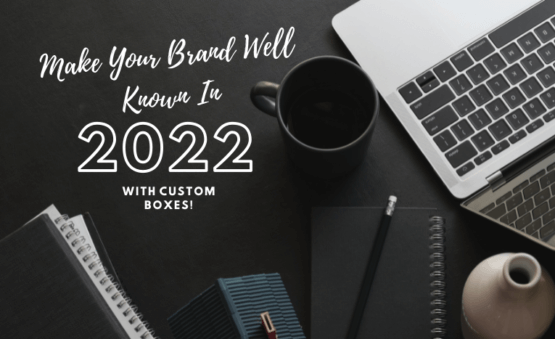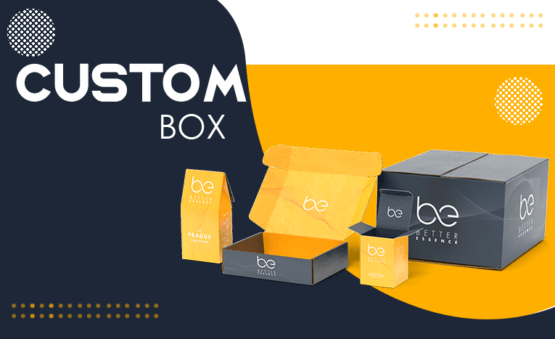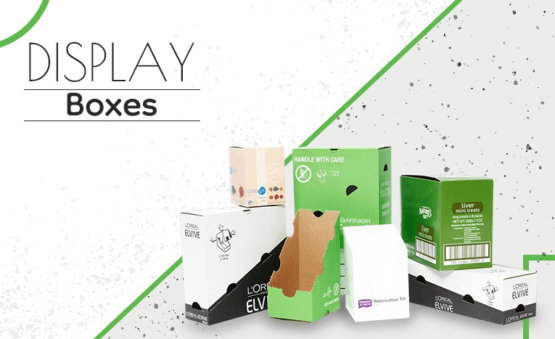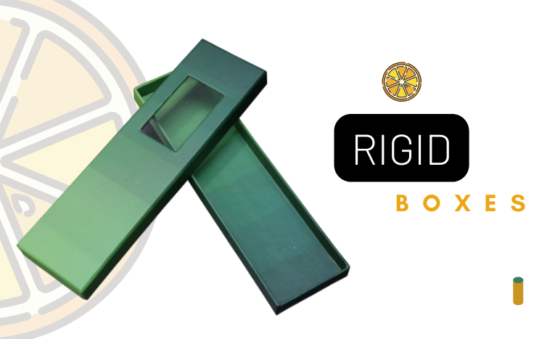How Much Does Custom Packaging Cost?
Many brands, whether well-established or new, often need a clearer understanding of the costs of designing custom packaging. As a result, they often use stock packaging that fails to represent their brand effectively and can even harm their reputation.
The primary goal of custom packaging is to highlight your brand and create a lasting impact on your target market. Achieving this becomes challenging when you use stock packaging that your competitors are likely using.
The cost of custom packaging may seem elusive, especially if you are unfamiliar with the industry and the factors that can influence costs. However, you have the power to control and manage the expenses to ensure they fit within your budget.
The first step in determining your custom packaging costs is to identify the type of product you are selling. It could include luxury, cosmetics, food, electronics, or other products. By understanding the industry, you can narrow down your choices and better understand the costs involved.
Moreover, it’s crucial to differentiate between e-commerce and retail packaging, as they serve different purposes and will significantly impact your pricing options.
Furthermore, it’s important to consider your product launch timeframe as it can impact your costs, especially when dealing with packaging solutions that require more time and attention, such as rigid packaging.
Once you have determined these factors, you can compare the key cost considerations for your custom packaging, starting with the materials and finishes.
The Cost of Materials and Finishes.
The initial expense to consider when assessing your custom packaging expenses is the cost of materials and finishes. This step will help narrow your choices regarding structural design and printing costs.
A wide range of materials are available, each with its price point. It’s essential to remember that a significant portion of your expenses will be for sourcing and shipping the packaging materials to your location.
Consider adjusting your product launch plan to include more cost-effective packaging options that can be produced in a shorter timeframe.
It’s important to differentiate between your desires and actual requirements regarding custom packaging. While high-quality packaging materials may be appealing, they may only sometimes be the most efficient choice in terms of cost optimization.
Think of it this way: You may desire an original Picasso artwork on your wall, but a printed replica can have a similar effect without the high cost.
For smaller businesses, seek out a custom packaging company that can help optimize your costs and provide you with the minimum order quantity you need. This approach can ensure that your packaging meets your requirements while keeping expenses under control.
As high-quality packaging does, numerous cost-effective material options can effectively convey your brand message.
As we discussed earlier, the nature of your industry and the specific requirements of your product play a crucial role in determining the suitable materials and finishes for your custom packaging.
Once you have finalized the material and finish, it’s important to determine the volume of custom packaging you will need. Smaller boxes are generally cheaper to produce and ship, but larger boxes can also be cost-effective depending on the minimum order requirements.
In general, the cost per unit decreases as the order quantity increases. Some materials are specifically designed to offer cost-effective solutions for small orders, while others may not be as economical for smaller quantities.
Considering their costs, let’s explore and assess the available material and finishing options.
- Corrugated
Corrugated material is regarded as a reliable and cost-effective choice for custom packaging due to its durability and affordability.
This packaging is easy to assemble and can accommodate a wide range of products, making it a versatile option for various packaging needs.
For e-commerce businesses, corrugated packaging is particularly popular due to its cost and time efficiency in production and sustainability.
The thick texture of corrugated material provides robust support for heavier items while offering excellent protection for fragile or delicate items.
- Folding Carton (White and Kraft)
Opting for folding cartons can be an excellent cost-saving choice, especially for products that don’t require extensive support or protection.
Folding cartons offer low shipping costs due to their lightweight nature, allowing larger orders at reduced expenses.
It’s important to note that kraft paperboard costs slightly higher than SBS white paperboard. When evaluating your custom packaging options, consider these cost differences.
Kraft paperboard is directly sourced from natural fibres, which gives it a distinct texture and feel, making it slightly pricier. On the other hand, SBS white paperboard is made from recycled paper, making it a more affordable option.
The coating process of the SBS white paperboard provides a surface suitable for high-quality printing and finishing, allowing you to showcase your brand identity effectively.
- Rigid boxes
Rigid packaging is ideal for those willing to invest more in their packaging.
If you’re seeking a high-end and robust packaging solution, rigid boxes are the top option, albeit the most expensive on the market.
Rigid boxes are often for luxury products to impart a premium touch to the packaging and enhance the overall customer experience.
Read More: What is Rigid Box?
In simple terms, rigid packaging is crafted from high-quality, thick greyboard, and skilled artisans perform its final construction manually.
Unlike simply printing a dieline that can be folded into shape, rigid packaging requires each edge and surface to be meticulously glued together by hand.
The Cost of Structural and Artwork Design Services
If you already have a design and structure finalized for your packaging, this cost consideration may not apply.
However, if you are new to creating custom packaging, you will likely need assistance with artwork and structural design services to bring your packaging project to life.
It’s important to note that manufacturers typically do not provide these services, so it will be your responsibility to source them independently. It can lead to higher costs in the long run, as you may pay multiple companies a premium for various aspects of your packaging creation.
On the other hand, solution providers can offer comprehensive project management services, including cost optimization and assistance with artwork and structural design. You can save on costs by engaging a solution provider. This streamlined approach simplifies your cost structure and saves valuable time throughout your packaging project.
- Artwork Design
The artwork design for your custom packaging also influences the overall service costs. The artwork design needs to reflect and communicate your brand narrative effectively. However, it’s important to note that more complex design ideas incur higher costs.
- Structural Engineering
Seeking the expertise of a structural engineer can be advantageous to ensure the optimal optimization of your product packaging.
Even if a standard shape seems suitable for your packaging, precise measurements are crucial for your product’s safety and cost considerations.
It’s important to note that measuring the packaging dimensions should be based on the interior dimensions.
Ensuring accurate measurements of your product helps minimize material costs and maximizes the protection provided to your product during transportation and storage.
Comparing Printing Costs
One of the primary reasons companies choose custom packaging is the ability to print their branding directly onto the packaging. The printing method used depends on personal preference and budget. The three main options for printing on custom packaging are:
- Digital printing: This method is cost-effective and suitable for smaller orders. Designs are directly present on the box, offering flexibility and various design possibilities.
- Offset printing: This higher-resolution method uses a printing plate and rubber cylinder to transfer the design onto the packaging. It provides a sleek finish but comes at a higher price point.
- Flexographic printing: Designs are stamped onto the box using a printing plate, similar to digital printing. However, each plate can be costly, and this method is best for larger orders with single-colour designs.
The Cost of Manufacturing
Differentiating between manufacturers and solution providers is crucial when considering packaging services for your products. Solution providers offer end-to-end packaging solutions, encompassing manufacturing and more, albeit at a premium cost.
Conversely, manufacturers solely focus on fulfilling your order, leaving all pre- and post-manufacturing responsibilities in your hands. Ensuring quality control tests, such as the edge crush test for corrugated packaging, becomes your responsibility. This limitation may restrict your options, as proximity to manufacturers becomes a significant consideration for streamlined shipping and logistics. Additionally, acquiring a sample or prototype before granting production approval becomes essential when sourcing manufacturers independently.
The Cost of Shipping and Logistics
It is crucial to consider shipping and logistics as significant factors in your budget. The structural design of your packaging influences the chosen shipping method. It is because the weight and dimensions directly impact shipping expenses. You can estimate the shipping costs associated with different transportation modes for your packaging by obtaining approximate figures.
Additionally, it is important to recognize that you might need to outsource services. It is to ensure effective logistics planning aligns with your product launch. Managing logistics fall upon you if you opt for manufacturers instead of full project cycle providers. It could increase overall costs as you independently coordinate and optimize the shipping and delivery processes.
A clear vision will enable you to estimate the shipping costs associated with your packaging more accurately. When considering cost estimates, it is crucial to consider the weight of the custom packaging and the volume of packaging. This consideration will help you select the appropriate box type and printing options that align with your budget constraints.




